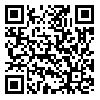2- esfahan university
Objective: The aim of the study was to compare the motor skills and the body balance in children with special disorders (Intellectual disability (ID), autism and learning disorder (LD)) with normally children (NC).
Materials & Methods: The present study was a descriptive-comparative (cross- sectional) research, about 120 children including 30 NC, 30 children LD, 30 children with autism and 30 with ID. The mean age of 7.7, selected through the schools and centers for children with special needs Mashhad through staged clustered random selection. To measure the motor skills of the children, 3 gross and fine motor skills measurement scales and body balance skill measurement were used. Descriptive and analytical statistics such as mean, standard deviation and multivariable variance was mainly used
Results: there was a meaningful difference in the gross and fine motor skills and body balance skill, (P<0.0001), between the NC and ID, autism and children with LD. Also among children whit special needs, children with LD earned the maximum points in all of the skills and autism children earned the minimum points.
Conclusion: According to the findings of the study, motor skills and body balance of children with learning disorder, autism and Intellectual disability is weaker than normally children’s. This indicates the need for increased education of children with special needs in this area is at a younger age.
Received: 29/05/2014 | Accepted: 10/01/2015 | Published: 21/03/2015
| Rights and permissions | |
 |
This work is licensed under a Creative Commons Attribution-NonCommercial 4.0 International License. |


